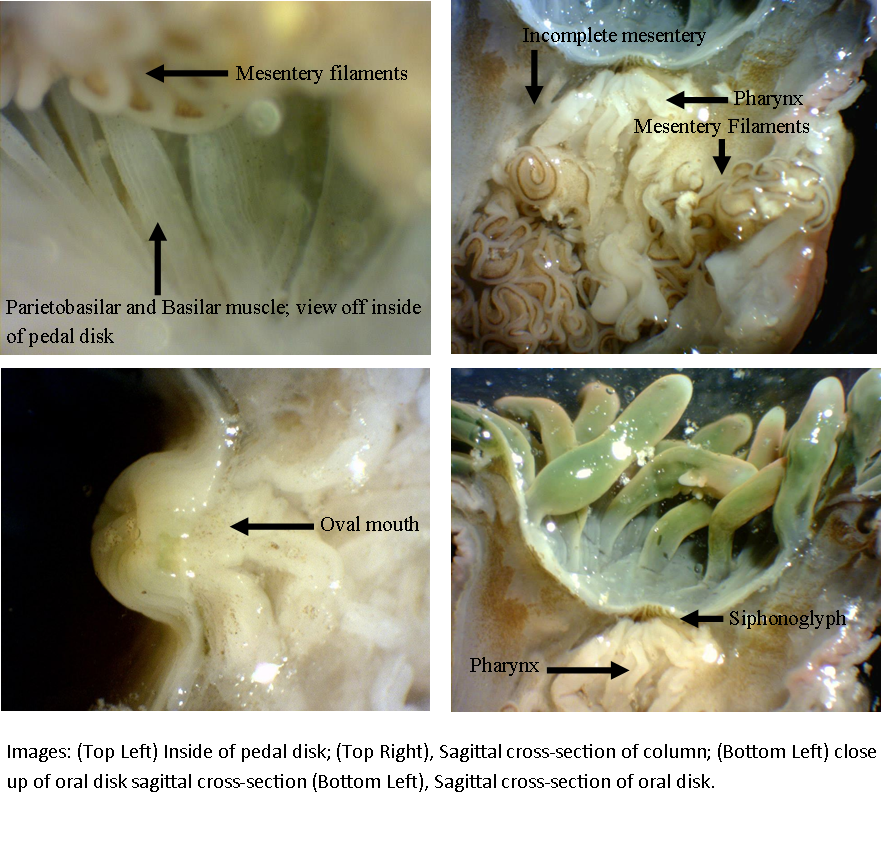Internal Morphology
Nutrient Transport
The largely sedentary lifestyle and filter feeding behaviour of mature Actiniaria, including E. quadricolor, corresponds to a relatively simple internal morphology. The oval mouth leads into a laterally compressed pharynx with the two opposing corners containing cilliated grooves called siphonoglyphs (Ruppert et al 2004). E. quadricolor has 2 -4 siphologlyphs conferring biradial symmetry. The coelenteron is divided by vertical out folds of the gastrodermis and mesolglea called mesenteries or septa (Ruppert et al 2004). These can be either complete septa reaching the pharynx or incomplete septa extending into the coelenteron (Ruppert et al 2004). Prey items are transported to the mouth by cilliary action. The mesenteries function largely to maximize the surface area for a number of processes including nematocyst discharge, prey immobilization, enzyme release for external digestion and phagocytic gastrodermal cells for uptake of digested food molecules (Ruppert et al 2004).

Musculature and Nervous System
Actiniaria musculature is largely comprised of both epidermal or gastrodermal veitheliomuscular sheets (Ruppert et al 2004). Epidermal sheets are found largely in the tentacle and oral disks with layers of longitudinal and circular muscles on the ectodermal and endodermal sides of the mesoglea respectively (Ruppert el al 2004). Sheets of circular gastrodermal muscles line the column wall and septa (Ruppert et al 2004). Longitudinal septal muscles called retractors are present and are responsible for retraction and invagination of oral disk and tentacles, an ability further discussing under Behaviour (Ruppert et al 2004).The parietobasilar and basilar muscles at the pedal disk are well developed, potentially facilitating the pedal disc mobility this species utilizes when escaping sediments, an activity also discussed in the behaviour page (Ruppert et al 2004).

At least two nerve nets, one epidermal and one gastrodermal, are used for muscle innervation and sensory perception (Ruppert et al 2004). Specialist sensory cells, cnidocytes, and other nervous cells are found in the highest density in epidermal cells and enable the anemone to interact effectively with its’ environment (Ruppert et al 2004). Cnidocytes, a single use explosive cell type unique to Cnidaria, often also contain toxins. They come in many different forms; however those found in E. quadricolor contain a harpoon-like projectable structure equip with toxins and are fired from a sub-cellular organelle together called an nematocyst (Fautin et al 2008). The largest nematocysts, up to 4.7 µm, can be found in the gastrodermal lining of the pharynx and mesenteric filaments of this species and are used in digestion (Fautin et al 2008).
|